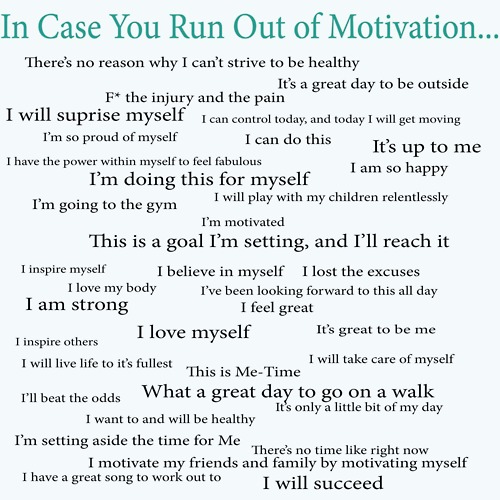Oh man, have I been busy in the garden! Sunday I turned 30#s of German Johnson tomatoes into 6 cups of rockin’ roasted tomato & pepper soup and 5 quarts of amazing basil tomato sauce. Do you get a little overwhelmed with your harvest?
Juicing helps a lot because Herb & I both juice at least one meal a day, heavy on the veggies. Plus we sell a lot of our surplus at the local Ag Center and tail gate farmers markets, but still – whew!
Here’s an article I found that had some really good ideas – I’m a hummus addict so I’m dying to try the baba ganoush and the curried squash bake.
Enjoy these and please share your ideas with me !
Holy Produce Proliferation! 17 Ways to Prepare Extra Fruits and Veggies When You Have a Bumper Crop
By Kim Kash
Maybe your home garden had a bumper crop, so every mixing bowl in your kitchen is full of tomatoes. Or perhaps your neighbor, who has a green thumb and a propensity for random acts of kindness, showed up at your door with enough jalapeños to bring all of Mexico City to tears. Or was it that the zucchinis at the farmer’s market looked so beautiful that you got a little carried away and now don’t even have room in your fridge for the milk?
Either way, it’s easy for fruits and veggies to pile up come summertime. If you’re ready to run screaming and leave the whole pile to rot—don’t! Here are some ideas for making delicious things out of LOTS of produce.
Too Many Tomatoes
Blender tomato sauce. Fill your blender 3/4 full of cored, quartered tomatoes—should be about a half dozen or so. Throw in a few cloves of garlic, a generous handful of basil leaves, and a small onion or a small bunch of green onions or scallions. Salt and pepper to taste, and blend with a little bit of olive oil, tasting and adding up to 1/2 cup to get a smooth but not oily consistency. When you stir this into fresh, hot pasta, the sauce will warm up just enough.
Roasted tomatoes. Slice tomatoes in half or in big chunks. Arrange on one or more baking sheets. Add big handfuls of basil, cilantro, or spring onions, drizzle with olive oil, and sprinkle with salt and pepper. Roast until tomatoes are wrinkly and soft, and herbs are completely wilted and disintegrating. Put into a bowl, and be sure to scrape all the oil and bits of herb off of the baking pan. Makes a great pasta sauce, bruschetta topping, or chunky topping for chicken, fish, or another cooked vegetable.
Tomato salad. Mix a variety of colors and types of tomatoes, throw in some herbs, and add a simple oil and vinegar dressing and a bit of salt and freshly ground pepper. Just because it’s salad doesn’t mean it has to have lettuce in it.
Tomato sauce. Yes, it’s obvious, but this is the Cadillac® method for using up a whole lot of tomatoes at once. Plus, tomato sauce freezes really well. There are too many recipes for us to recommend just one.
A Surplus of Summer Squash
Grilled squash. Thickly slice squash lengthwise and roast on the grill.
Summer squash bake. Slice or roughly chop a combination of summer squashes, enough to fill a baking dish. Add fresh herbs if you have them. Grate a layer of cheddar, jack, or even mozzarella on top, and use your fingers to sift a little bit of the cheese down into the vegetables. Sprinkle whole-grain breadcrumbs on top if you wish. Bake in a 350-degree oven until the vegetables are soft and the cheese is beginning to brown. Cover with foil if the cheese or breadcrumbs are browning too quickly. If the finished dish is a bit watery (some summer squashes are more watery than others when cooked), just serve with a slotted spoon.
Italian summer squash bake. Same as above, only add tomato sauce, and use mozzarella cheese.
Curried summer squash bake. Same as squash bake above, only omit the cheese and add a drained can of chickpeas, maybe some fresh greens, and 1 to 2 tablespoons curry powder to taste, depending on the quantity of squash you’re baking.
Your signature summer squash bake. Are you getting the idea about this squash bake thing? Summer squash is very mild in flavor, so it plays well with both eastern and western spices. Make a squash bake whenever you need to use up zucchini plus almost any other vegetable or herb or sauce or cheese.
Grate and freeze. Use later for zucchini fritters, zucchini bread, in frittatas, as a thickener for spaghetti sauce, or a filler in any kind of vegetable bake or casserole.
Bustin’ at the Seams with Basil
Pesto. Pesto. Pesto. You can use basil a few leaves at a time in Caprese salads or tomato sauce recipes. But if you need to use up a ton of basil in a hurry, pesto is what you want. Experiment with the many recipes out there—with or without cheese, with various kinds of nuts, with lots of olive oil or very little. Pesto stores beautifully in the fridge, in a tightly closed glass jar with a layer of olive oil covering it. Here’s what you can do with pesto:
- Smear it on bruschetta.
- Add it to green salads as a dressing.
- Use it as a pasta sauce; this is great with cherry tomatoes tossed in.
- Use it as a sandwich spread.
- Top grilled or roasted chicken, fish, or vegetables with it.
- Eat it with a spoon out of the jar.
A Cornucopia of Cucumbers
Raita. This Indian cucumber-yogurt condiment can be thick like a dip, or thin like a sauce, depending on the thickness of the yogurt you use. Thick or thin, whip some yogurt with a whisk to even out its consistency. Then stir it into to a bowl of chopped and (optionally) peeled cucumbers. Add more or less yogurt as you wish. Salt it to taste. If you want a spicy raita, add a seeded, finely chopped hot pepper.
Cucumber water. Peel and slice one or more cucumbers and add to a pitcher of water. Squeeze in a little lemon juice, and serve very cold as a refreshing thirst quencher on a hot day.
Cucumber salad. This was on the supper table almost every summer day when my mother was a child in Kentucky. Very thinly slice cucumbers, pour a little bit of white vinegar over them, and salt. Some people also add a little sugar, but Mom would not approve. These are simple and delicious—but don’t put leftovers in the fridge for next time, because as they marinate in the vinegar, they lose their crispness.
A Big Bell Pepper Buildup
Oven roast or grill. As with basil, there are plenty of recipes that call for one or a few red or yellow bell peppers. But when you have a real bell pepper glut, roasting them is the way to go. Take as many red and yellow bell peppers as you have and spread them on a hot grill, or on the top rack of the oven, set to broil. If you’re using the oven, line the peppers up on the front edge of the rack, and put a baking sheet underneath them to catch drips. When the skin blackens, give them a quarter turn with a good pair of tongs, and repeat until the peppers are charred all the way around. Then remove from the oven or grill and let rest. The charred skin will peel easily off of the cooled peppers. Core and slice the now-soft roasted peppers, coat the strips with olive oil, and store in a tightly closed container. Use these in pasta and on sandwiches and bruschetta.
Excessive Eggplantery
Many recipes call for the notoriously spongy eggplant to be fried in oil. Roasting eggplant instead is much healthier, and roasting on the grill imparts a rich, smoky flavor. In addition to the recipes below, try adding roasted eggplant to casseroles and veggie burgers.
Baba ghanoush. This Middle Eastern dip is often served alongside hummus, with pita bread. Slash one or more eggplants in several places and bake on a pan in a 425-degree oven until very soft. This can take an hour or more, depending on the size of the eggplants. Cool, then peel off the skin. Throw the soft interior into a food processor. For each eggplant, add 2 cloves of garlic, 1/4 cup of tahini, 2 tablespoons of olive oil, and the juice from one lemon. Blend just until incorporated, leaving the texture a little rough. Salt to taste. To serve, make a little well on the top of the baba ghanoush and pour some olive oil into the depression. Sprinkle parsley over the top. (Adapted from Vegetarian Cooking for Everyone by Deborah Madison.)
Roasted eggplant salad. Roast eggplants as above, peel and roughly chop. Serve in a large salad bowl with toasted pine nuts or walnuts, lots of parsley, and mint. If you have too many tomatoes, chop and add a few of those. Dress with either a light vinaigrette or with a bit of whipped yogurt.
Resource:
- American Heart Association: http://www.heart.org
- Yu Wen Li, Zhao Ya Ping, Xue Zheng, Wang Da Pu (Shanghai Jiao Tong University); Study on Synergistic Effect of Two Antioxidants and Its Anti-ageing Properties [J]; China Oils and Fats; 2002
- Haibo Wang, Muraleedharan G. Nair, Gale M. Strasburg, Yu-Chen Chang, Alden M. Booren, J. Ian Gray, and David L. DeWitt. Antioxidant and Antiinflammatory Activities of Anthocyanins and Their Aglycon, Cyanidin, from Tart Cherries. Journal of Natural Products 1999, 62 (2), pp 294-2






































